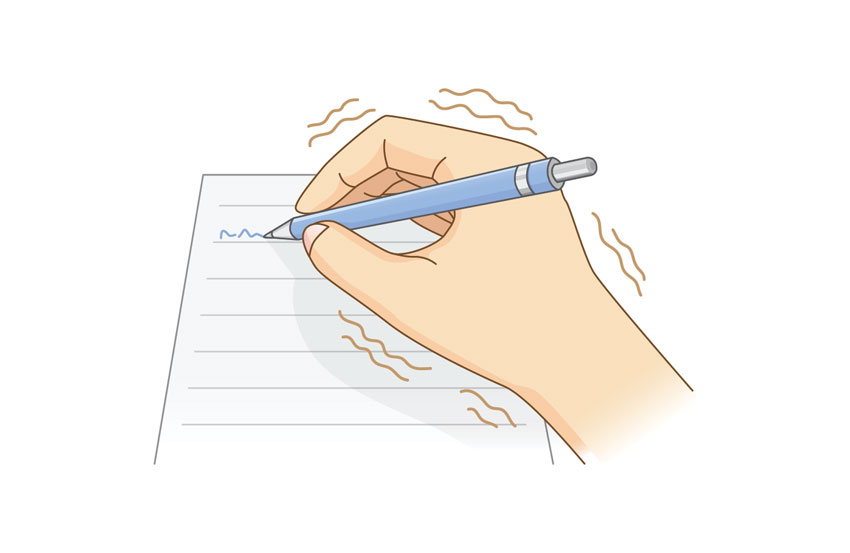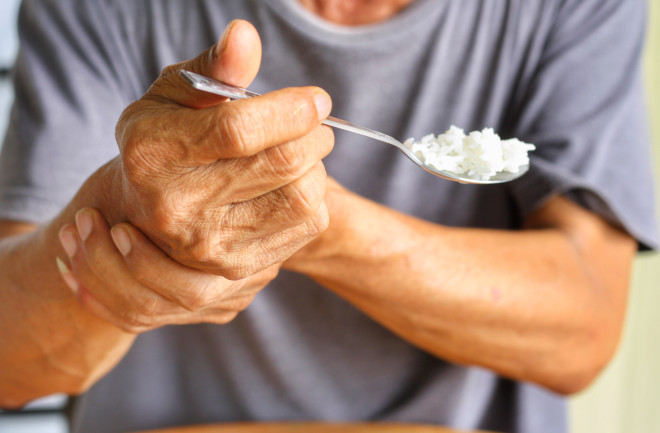

Tremor, one of the hyperkinetic movement disorders; Involuntary, uncontrollable movements seen in one or more parts of the body. Tremor, also known as tremor due to rhythmic movements, occurs for many different reasons. Different factors, from damage to the areas of the brain that control muscle movements, to diseases such as Parkinson's and stress, cause Tremor.
There are various types of tremor, depending on the body limbs affected and the symptoms displayed. Some methods are used in the diagnosis and treatment of these types, which are characterized by certain symptoms. With drug treatments and surgical intervention in the future, patients can continue their daily life activities.

Although the exact cause of tremor is not known, it can develop due to many factors. Most tremors seen in daily life are not extreme, so they are called normal. Genetic factors, environmental factors, psychological factors, and most importantly, damages that disrupt the nervous system can cause tremor. The genes that cause the disease are not clear; However, if tremor has been observed in the medical history of the patients' families, the symptoms may be seen earlier than normal in these patients. Damages in certain parts of the brain that affect the musculoskeletal system may also be the cause of tremor. However, no abnormality was observed in the brain images of the patients. Especially in essential tremor, physicians primarily suspect the damage seen in the nervous system and affecting the muscular system. The normal brain images also make it difficult to diagnose the disease. Some factors that cause tremor are as follows:
stress and fatigue,
advanced age,
Excessive caffeine consumption
Muscle fatigue caused by excessive exertion,
Low blood level.
Tremor may occur in some patients for various diseases and other medical reasons. Head injuries due to accidents and injuries, Parkinson's disease, stroke, brain tumors, hyperthyroidism that causes the body to produce more thyroid than normal, multiple sclerosis and alcohol addiction are some of these reasons. Drugs and active substances used for some diseases can also cause tremors. These drugs include drugs used in some psychiatric disorders, amphetamines, and corticosteroids that disrupt hormone balance. Some researchers think that the structure that causes tremor is the thalamus. One of the causes of tremor is that the thalamus, which is effective on the musculoskeletal system and provides control of movements, is affected by damaged brain activities.
What are the Types of Tremor?
Although there are many different types of tremor disease, it is basically divided into two as resting tremor and movement tremor. Tremors, which are usually seen in the hands and feet, disappear when the patient starts to move. Movement tremor is the type of tremor that occurs when people are in motion and the muscles are voluntarily contracted. Tremors in motion do not have an onset time. This type of tremor is divided into 3 according to the onset time, as initial, dynamic, and intentional. Postural tremor, which is considered as motion tremor, is a type of tremor that is seen with increased amplitude in situations such as excitement, fear, and tension, and when a certain position is maintained against gravity.
Essential Tremor
Essential tremor is the most common type of tremor with a rate of 1-5% in general. In this type, patients do not have any neurological findings other than tremor symptoms. Essential tremor, also known as tremor of unknown origin, affects the hands as well as the head and neck regions. These tremors, which are usually seen in adults, start in one hand and spread to the other hand over time. While tremors increase in simple motor movements such as grasping objects or writing, tremors stop when resting or sleeping and when alcohol is taken. Stress, fatigue, excitement, nervousness, temperature changes and other changes in mood are some of these factors.

What are the Symptoms?
According to the different types of tremor, the symptoms seen in the patients also vary. However, similar symptoms are observed in most of the patients, especially in the initial stages.
Involuntary tremors in the arms, legs, hands, feet and head and neck regions of the body,
Difficulties in writing
Difficulty grasping and controlling objects
Vibration of voice and tongue while speaking.
In essential tremor, which is the most common type of tremor, these additional symptoms are also observed:
Increased tremors during stressful and busy periods
Increasing tremors in motion, slowing down at rest,
Vibrations even at rest
Twitches in the eyes, eyelids and certain parts of the face,
Infrequent balance problems that cause falls and injuries.
How is Tremor Disease Diagnosed?
There is no specific blood test or examination for the diagnosis of tremor. Therefore, the diagnosis of the disease can only be made by excluding other diseases with similar symptoms. For this purpose, blood and urine tests, electromyography (EMG) and radiological imaging methods, especially MR, are used. During the clinical examination, the patient's medical history and symptoms are listened. The specialist physician first wants to measure the severity of the tremors during the physical examination. For this purpose, patients are expected to make some movements. These movements include basic and simple movements such as grasping an object or writing. At the same time, the patient's musculoskeletal system, posture and reflexes should also be evaluated. For this purpose, physicians still want patients to repeat some movements. Touching certain parts of the face with the tip of the finger or walking in a straight line are some of the movements that the patient should do.
 What are the Treatment Methods?
What are the Treatment Methods?
Although there is no definitive treatment for tremor, there are some methods applied to reduce symptoms. The degree of the disease is of great importance when determining the treatment method to be used. There is usually no treatment for very mild tremors. Patients often do not consult their physicians for these mild tremors. In more severe and severe tremors, methods such as drug therapy, botox and surgical intervention are used.
Medication
Patients are treated with drugs only to minimize the symptoms of tremor, not the cause of essential tremor.
Beta-blockers, such as propranolol, that limit adrenaline and severe tremors.
Flunarizine, a type of blood pressure medication that limits the adrenaline hormone,
mood-modifying antidepressants such as Alpazolam,
Anticonvulsant drugs that reduce the excitation seen in nerve endings, such as primidone.
Botox Treatment
Botox, which is generally applied to the face and head areas, is used to weaken the muscles. In this way, vibrations are minimized. Botox is also applied to the hands in some cases.
Surgical intervention
In cases where drug treatment is not sufficient, surgical operation is also recommended for patients with severe tremors. Brain Stimulation Surgery, also known as a brain battery, is a method used in diseases such as Parkinson's and dystonia, where severe tremors are experienced as well as tremor. Small electrodes with thin cables are placed in the thalamus, which is the control area of musculoskeletal movements. The battery, which is the power source, is usually placed in the rib cage. Electrodes placed in the determined areas prevent brain signals that cause severe shaking. Stereotactic radiosurgery is one of the surgical operations. By giving strong X-rays to the area causing the tremors, the determined area is rendered ineffective.